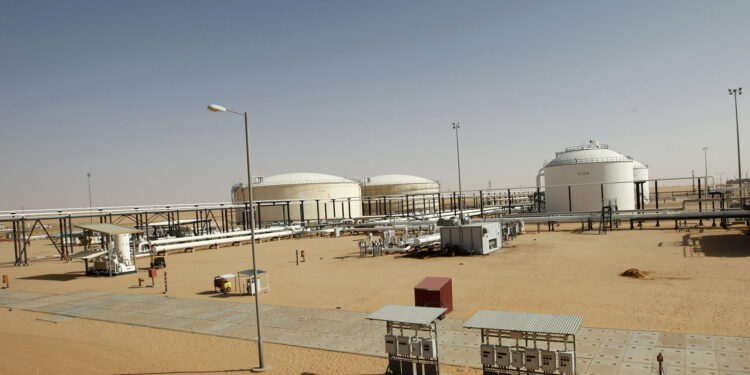1/9/2024–|Last update: 1/9/202401:06 PM (Makkah Time)
Libya’s eastern Sarir, Messala and Nafoura oil fields have been ordered to resume production, Reuters reported citing engineers late Saturday, after a standoff between rival political factions shut down most of the country’s oil fields.
The engineers added, “Now orders have arrived from the management of the Arabian Gulf Oil Company to resume production in the fields without mentioning the reason for the return.”
A struggle for control of Libya’s central bank has halted oil production in Libya and threatens the worst crisis in years for the country, long torn by rival factions from the east and west.
The confrontation began when western factions moved late last month to oust central bank governor Siddiq al-Kabir and replace him with a rival council, prompting eastern factions to shut down oil production entirely.
The eastern government, which controls the oil fields that account for nearly all of Libya’s output, is demanding that western authorities back down from replacing the central bank governor, a key post in a country where control of oil revenues is the ultimate prize for all factions.
Engineers at the Hariga oil export port said earlier on Saturday that the port had stopped operating due to a shortage of crude supplies after the near-total shutdown of the Sarir oil field, the port’s main supplier.
The Sarir field usually produces about 209,000 barrels per day. Libya pumped about 1.18 million barrels per day in July in total.
mounting losses
Libya’s National Oil Corporation said in a statement on Friday that the recent shutdown of oil fields has caused the loss of about 63% of the country’s total oil production. This comes days after the government controlling eastern Libya and appointed by parliament declared a state of “force majeure” on the entire oil sector, halting production and exports.
The National Oil Corporation pointed out that “the oil sector is the safety valve for Libya, as its workers represent all parts of the country, from the east, west and south. This sector embodies the unity of Libya and is the backbone of its economy and the future of its coming generations.”
The corporation stressed that “repeated closures lead to the loss of a large part of oil production, cause the deterioration of the sector’s infrastructure, and dissipate efforts made to achieve the plan to increase production.”
She stated that “restarting the stopped fields will require huge costs and double technical efforts, which will increase the burdens on the institution and the national economy.”
The institution explained that its teams “are currently working to reduce the damage as much as possible, alleviate its impact on citizens, and assess the losses resulting from the closures.”
She expressed her expectations of “a quick resolution to the crisis.”
The losses from the oil and gas shutdown in Libya amounted to more than $120 million in 3 days, according to a statement by the National Oil Corporation on Thursday, which showed a decline in the rates of natural oil production from 1,279,386 barrels last Monday (the day the shutdown began) to 591,024 barrels last Wednesday.
Libya depends on oil export revenues by 90%.
In addition to the recent central bank crisis, Libya has been experiencing another crisis for 3 years, represented by a conflict between the Government of National Unity headed by Abdel Hamid Dbeibah, based in Tripoli, which runs the entire west of the country and enjoys international and UN recognition, and the second government, Osama Hamad, based in Benghazi, which runs the entire east of the country and cities in the south.



